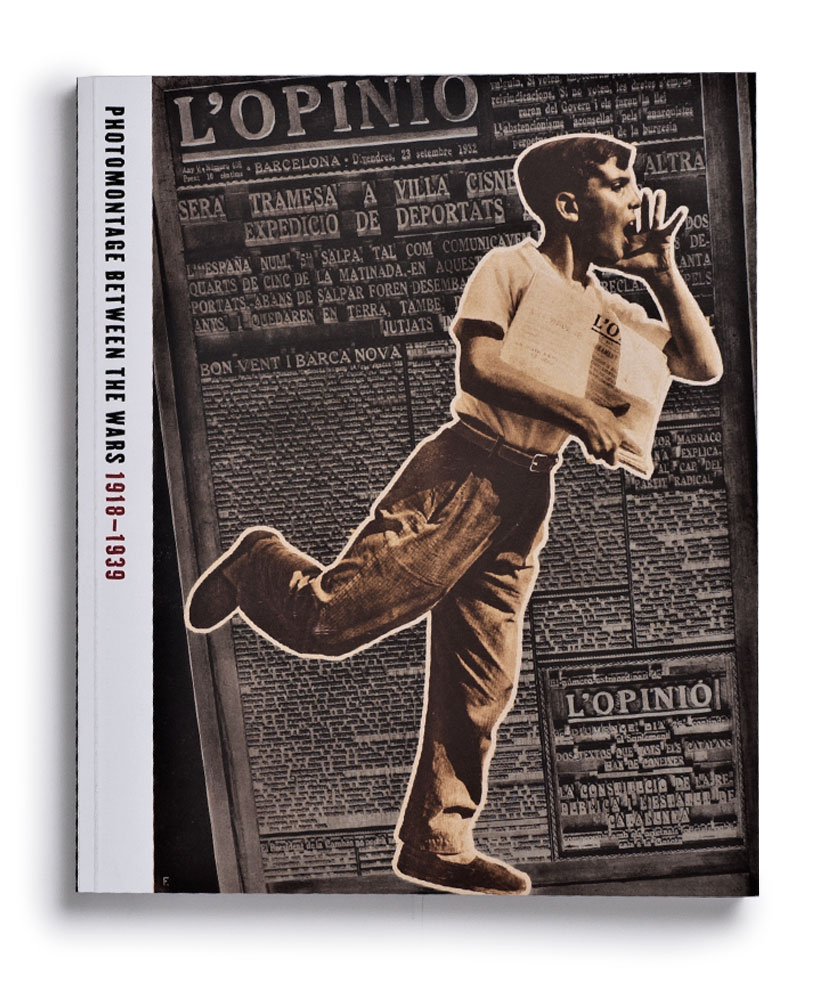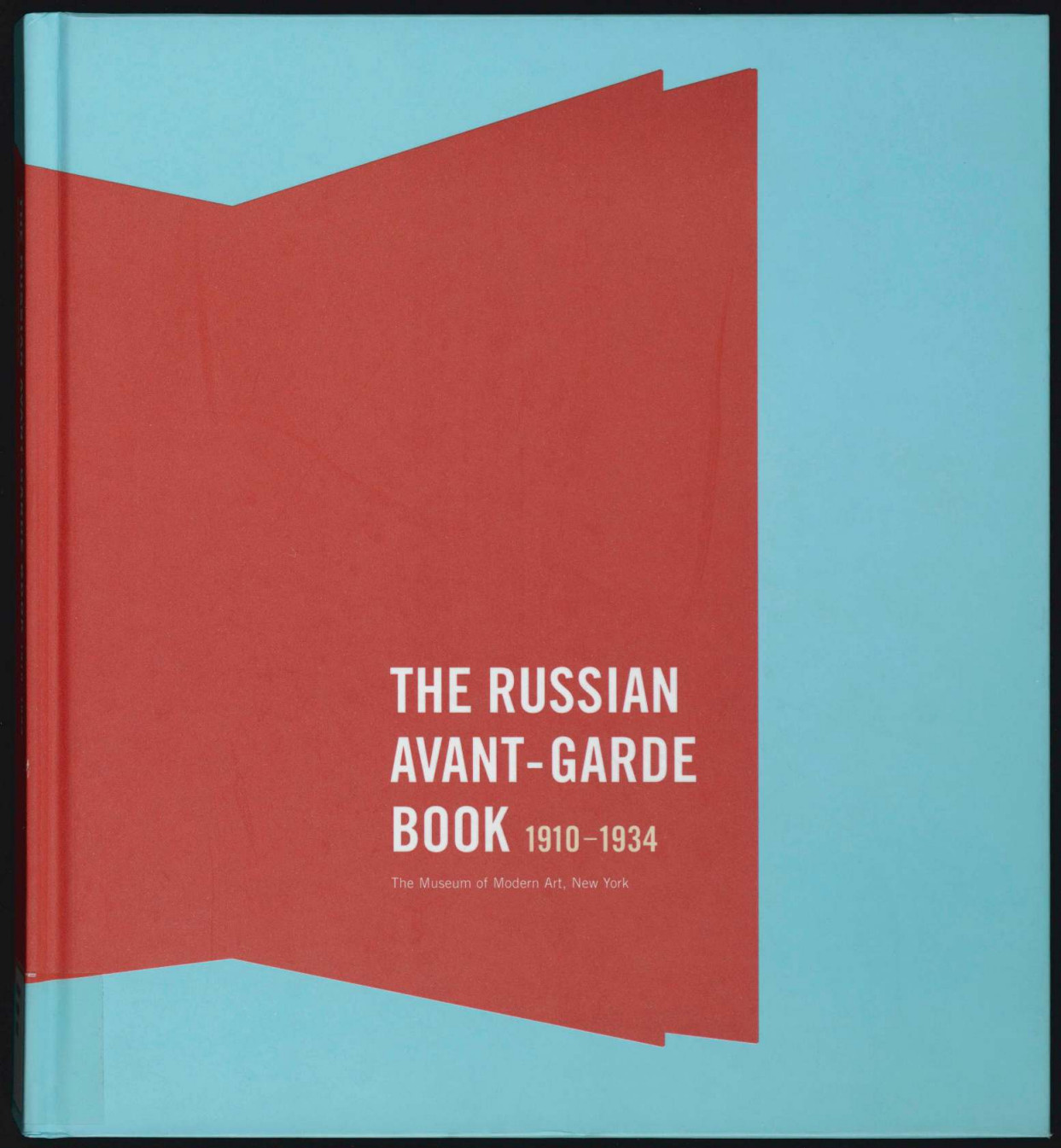Photomontage Between the Wars, 1918-1939 (2012) [EN, ES]
Filed under catalogue | Tags: · art, art history, avant-garde, collage, montage, photography, photomontage

This publication offers an overview of the birth of the photomontage process specifically in Germany and the Soviet Union. The extensive range of posters, collages, maquettes, postcards, magazines, and books attests to the large influence of photomontage in politics, social protest, and advertising, while also demonstrating the popularity of the technique among avant-garde members during these two decades.
The catalogue features an essay by Adrian Sudhalter, as well as a chronology of the era, a selection of period texts—several published in translation for the first time—by some of the represented artists, and facsimile reproduction and translation of the catalogue of one of the most important exhibition devoted to this artistic technique at the Kunstgewerbemuseum in Berlin in 1931 (with essays by Curt Glaser, César Domela-Nieuwenhuis, and Gustav Klutsis). The exhibition is drawn primarily from the Merrill C. Berman Collection in the United States.
Publisher Fundación Juan March, Madrid, 2012
ISBN 9788470755972
184 pages
Review: Paul Messaris (Advertising & Society Review, 2014).
English: PDF, PDF (23 MB), View online
Spanish: PDF, PDF (24 MB), View online
Margit Rowell, Deborah Wye: The Russian Avant-Garde Book, 1910-1934 (2002–) [English, Spanish]
Filed under catalogue | Tags: · artists book, avant-garde, book, design, futurism, graphic design, photography, photomontage, propaganda, russia, soviet union

“Russian avant-garde books made between 1900s-30s reflect a vivid and tumultuous period in that nation’s history that had ramifications for art, society, and politics. The early books, with their variously sized pages of coarse paper, illustrations entwined with printed, hand-written, and stamped texts, and provocative covers, were intended to shock academic conventions and bourgeois sensibilities. After the 1917 Revolution, books appeared with optimistic designs and photomontage meant to reach the masses and symbolize a rational, machine-led future. Later books showcased modern Soviet architecture and industry in the service of the government’s agenda.
Major artists adopted the book format during these two decades. They include Natalia Goncharova, El Lissitzky, Kazimir Malevich, Aleksandr Rodchenko, Olga Rozanova, the Stenberg brothers, Varvara Stepanova, and others. These artists often collaborated with poets, who created their own transrational language to accompany the imaginative illustrations. Three major artistic movements, Futurism, Suprematism, and Constructivism, that developed during this period in painting and sculpture also found their echo in the book format.
This publication accompanied an exhibition of Russian avant-garde books at The Museum of Modern Art, New York. Featuring some 300 books, this was the most comprehensive exhibition ever devoted exclusively to the illustrated books made during this period. It was prompted by a gift to MoMA of more than 1,000 Russian avant-garde illustrated books from The Judith Rothschild Foundation, New York.”
With essays by Deborah Wye, Nina Gurianova, Jared Ash, Gerald Janecek, and Margit Rowell.
Publisher Museum of Modern Art, New York, 2002
ISBN 0870700073, 9780870700071
304 pages
via MoMA
Reviews: Holland Cotter (NY Times, 2002), Steven Heller (Eye, 2002).
Exh. review: Kristin M. Jones (Frieze, 2002).
Exhibition website
Publisher (incl. installation views)
WorldCat
English: PDF, PDF (2002, 72 MB)
Spanish: PDF, PDF (2003, 74 MB)
Alfred H. Barr, Jr.: Cubism and Abstract Art: Painting, Sculpture, Constructions, Photography, Architecture, Industrial Art, Theatre, Films, Posters, Typography (1936)
Filed under book, catalogue | Tags: · abstract art, abstraction, architecture, art, art history, avant-garde, constructivism, cubism, dada, design, expressionism, fauvism, film, futurism, impressionism, painting, photography, sculpture, suprematism, surrealism, theatre, typography

The catalogue of the first MoMA’s retrospective of modernism, held 2 March-19 April 1936, laid the theoretical foundation of the museum. Its jacket contains a notorious chart of modernist art history, the Diagram of Stylistic Evolution from 1890 until 1935.
“The catalogue remains an important historical document (as does that for Fantastic Art, Dada, Surrealism). It set abstraction within a formalist framework that—ignoring the intellectual byways of French symbolism, German idealism, and Russian Marxism of the previous thirty years—was shaped by the scientific climate that had started a century before. … The exhibition together with the widespread dissemination of its influential catalogue, established Cubism as the central issue of early modernism, abstraction as the goal.” (Sybil Gordon Kantor, 2003)
The exhibition later traveled to another 7 cities: San Francisco, Cincinnati, Minneapolis, Cleveland, Baltimore, Providence, and Grand Rapids.
Publisher Museum of Modern Art, New York, 1936
249 pages
via MoMA
Commentary: Meyer Schapiro (Marxist Quarterly, 1937), Susan Noyes Platt (Art Journal, 1988), Astrit Schmidt Burkhardt (Word & Image, 2000).
Publisher (incl. master checklist and press releases)
WorldCat
PDF (47 MB)
Comment (1)
